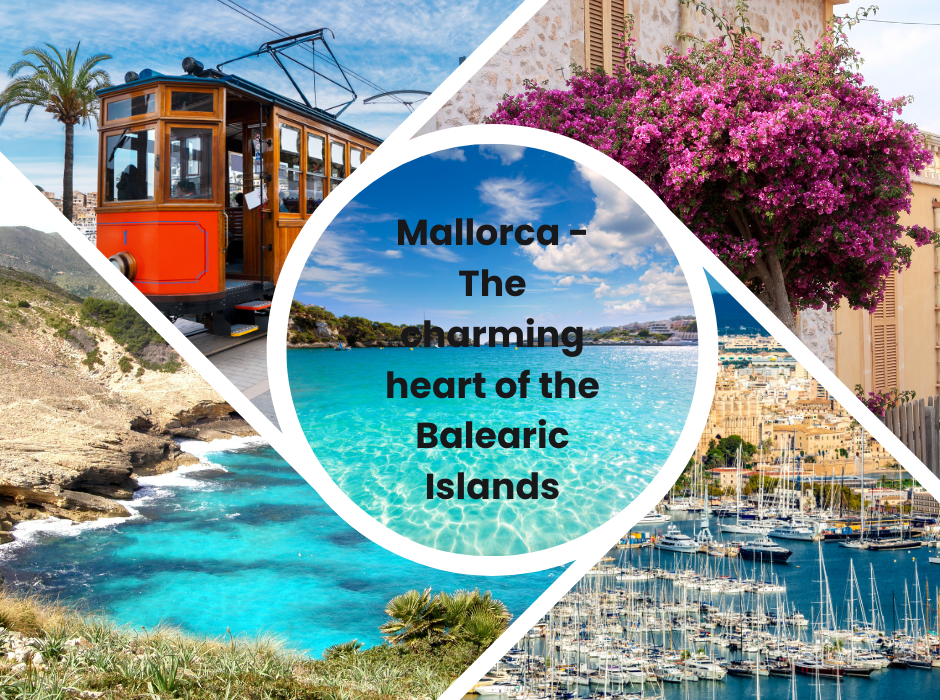Mallorca – The charming heart of the Balearic Islands
Imagine a place where crystal-clear beaches, picturesque villages lined with mountains and a vibrant Mediterranean lifestyle come together in perfect harmony – Mallorca. The largest of the Balearic Islands is a true paradise for those seeking natural beauty, historical monuments and gastronomic delights. Palma, the island’s pulsating capital, is full of life, while the smaller towns and villages exude an enchanting tranquillity. But what really makes this island special? Let’s discover it together!
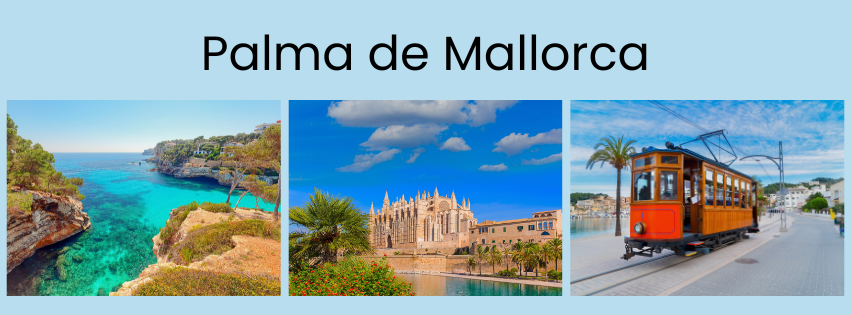
Did you know? While the archipelago is made up of 151 islands, Mallorca, Ibiza, Menorca and Formentera form the core of the Balearic Islands. Mallorca, Europe’s summer playground.
Mallorca’s history – conquerors and masterpieces
Mallorca’s history is as colourful as the sunset at Cape Formentor. The island has been inhabited by the ancient Phoenicians and Romans, but it really flourished under the Moorish rule, who left behind impressive palaces and irrigation systems. In the 13th century, the island was reconquered by James I of Aragon, the king of Aragon, and the development of Mallorca’s present-day image began. Gothic and Renaissance architecture still defines the island’s towns and cities, and the Cathedral of La Seu or the Almudaina Palace are perfect examples of this heritage.

What to see in Palma?
Mallorca’s old town, also known as ‘La Ciutat’, has a fascinating historic atmosphere, full of centuries-old city walls, imposing buildings and vibrant squares. The architectural masterpieces here are Gothic and Renaissance, including the famous Santa Maria Cathedral (La Seu). Its grandiose construction took over 400 years and boasts one of the largest stained glass windows in the world. The cathedral’s spires soar high into the sky, while the surrounding palm trees give the building a special Mediterranean feel.
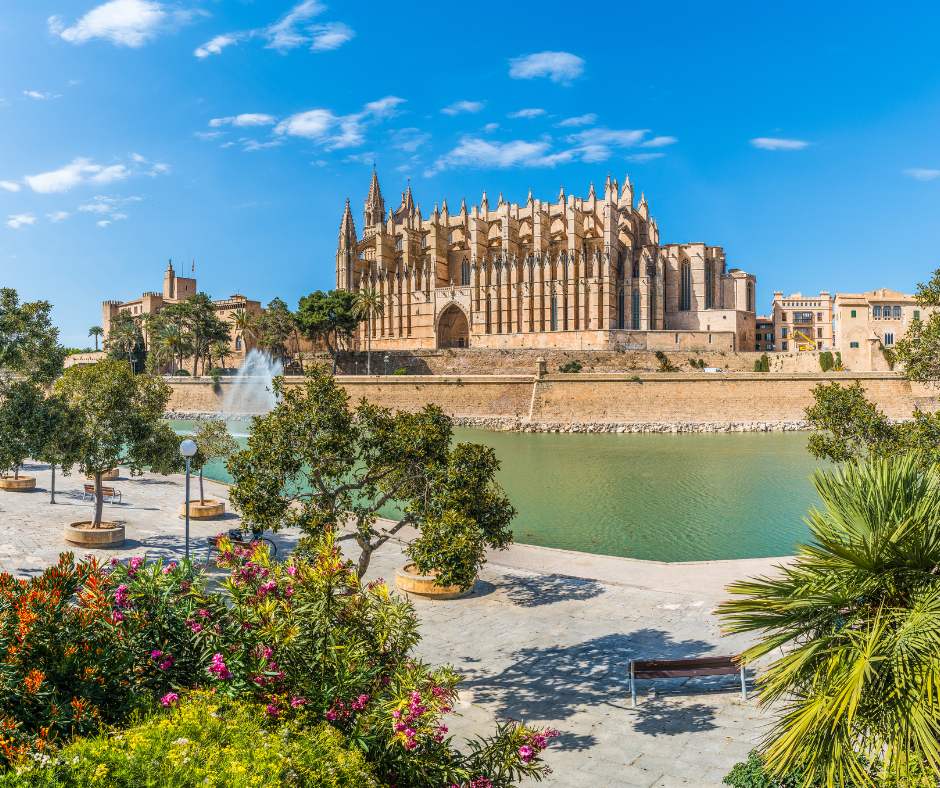
If there’s only one thing to see in Mallorca, this is it! La Seu Cathedral A Gothic masterpiece, the interior of which was redesigned by Antoni Gaudí himself, La Seu Cathedral will enchant visitors with its impressive dimensions and the way the light spills through its stained glass windows.
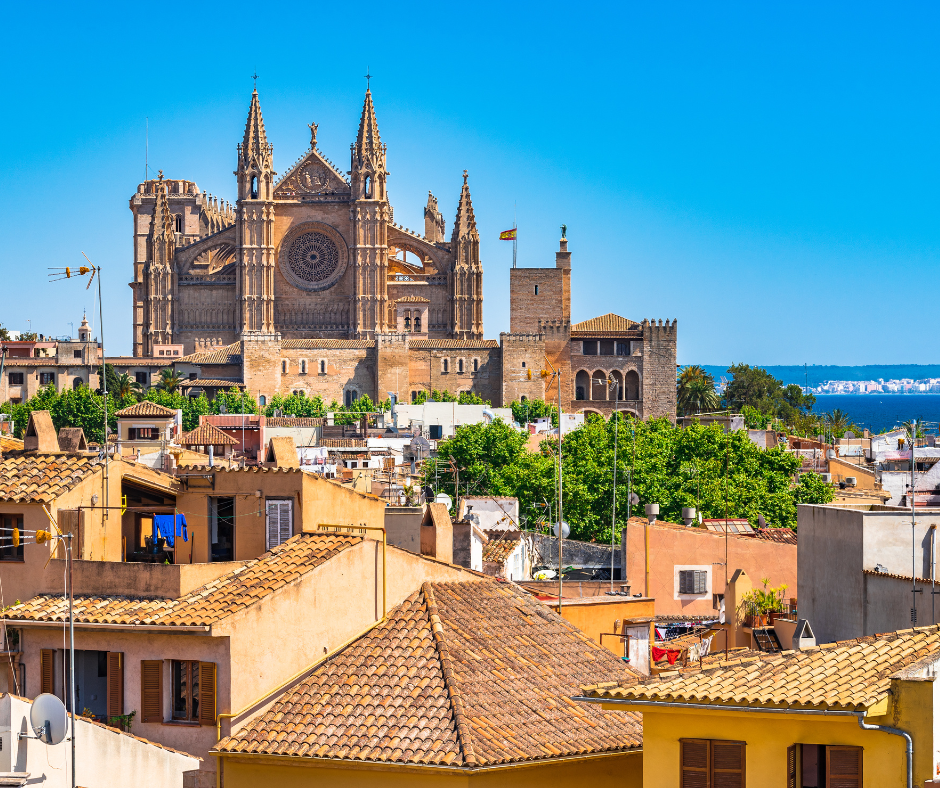
TIP: mallorca-cathedral-diocese-museum-skip-the-line-ticket
Right next to the cathedral stands this Moorish palace of Almudaina origin, which is still the official residence of the Spanish royal family when they are on the island.
The Bellver Castle is a unique circular fortress and one of the most unique sights on Mallorca. Rising high above the city and the sea, it offers a fantastic panoramic view of Palma harbour and the surrounding countryside. The castle, built in the 14th century, was once a royal residence and is now a museum of the island’s history.
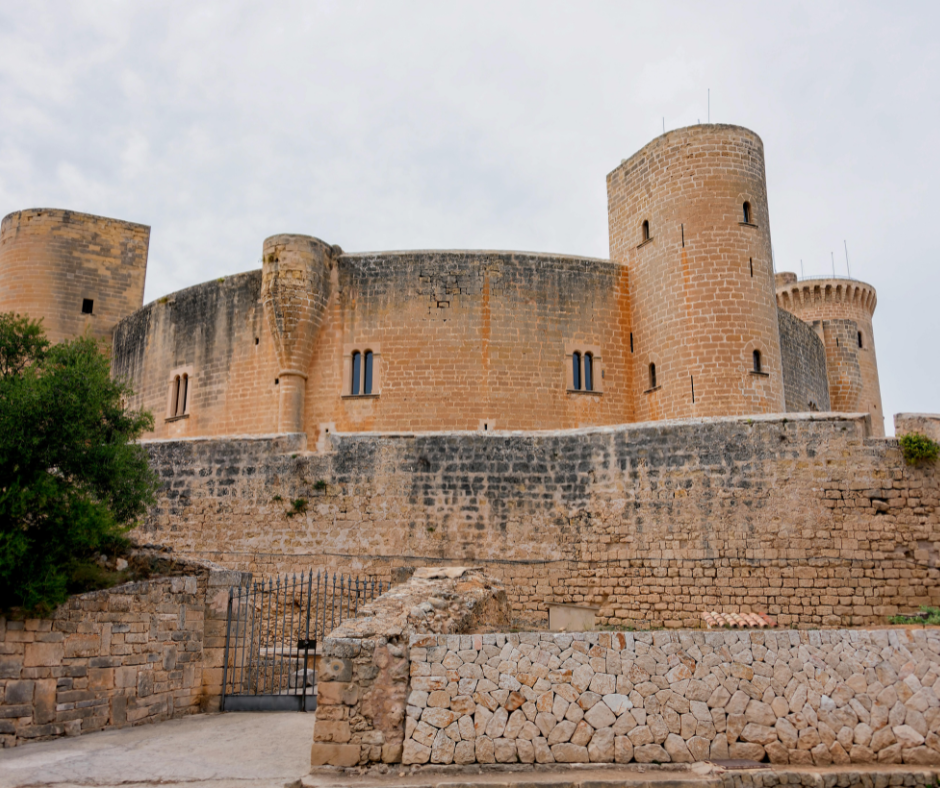
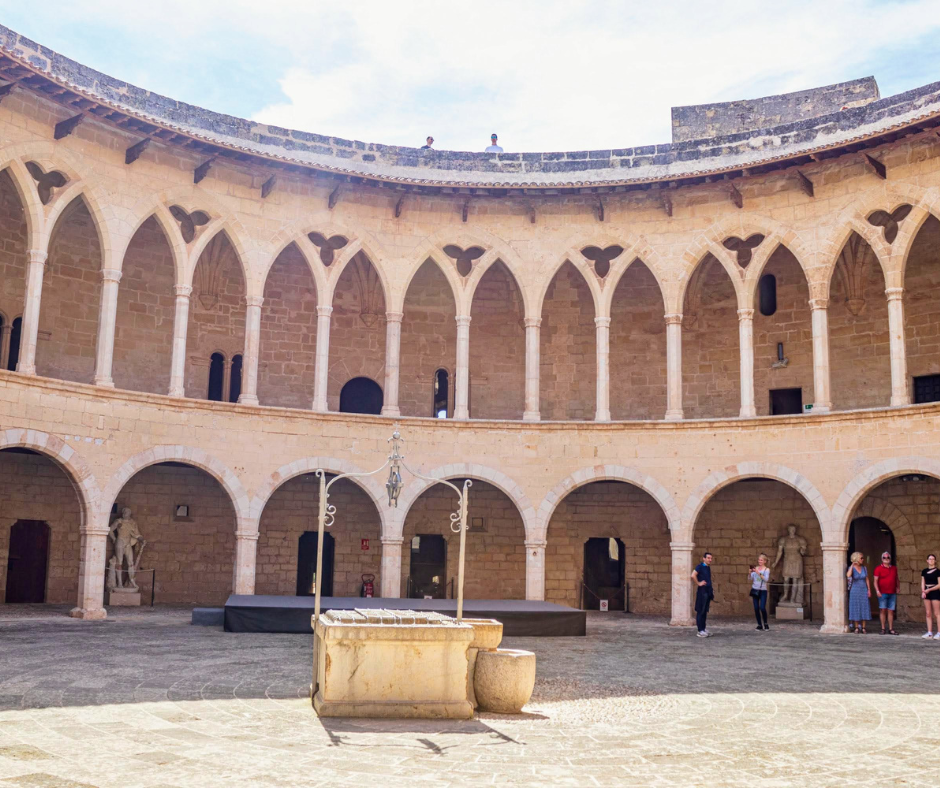
If you’d rather explore a more bohemian, artistic side of Mallorca, the Santa Catalina district is the perfect destination. This vibrant neighbourhood is full of cosy, creative art galleries, modern and traditional bars, and a lively local market where you can find fresh produce and authentic Mallorcan flavours. A stroll through the narrow streets is guaranteed to enchant you, as the unique atmosphere of the district perfectly combines the special flair of the past and present.
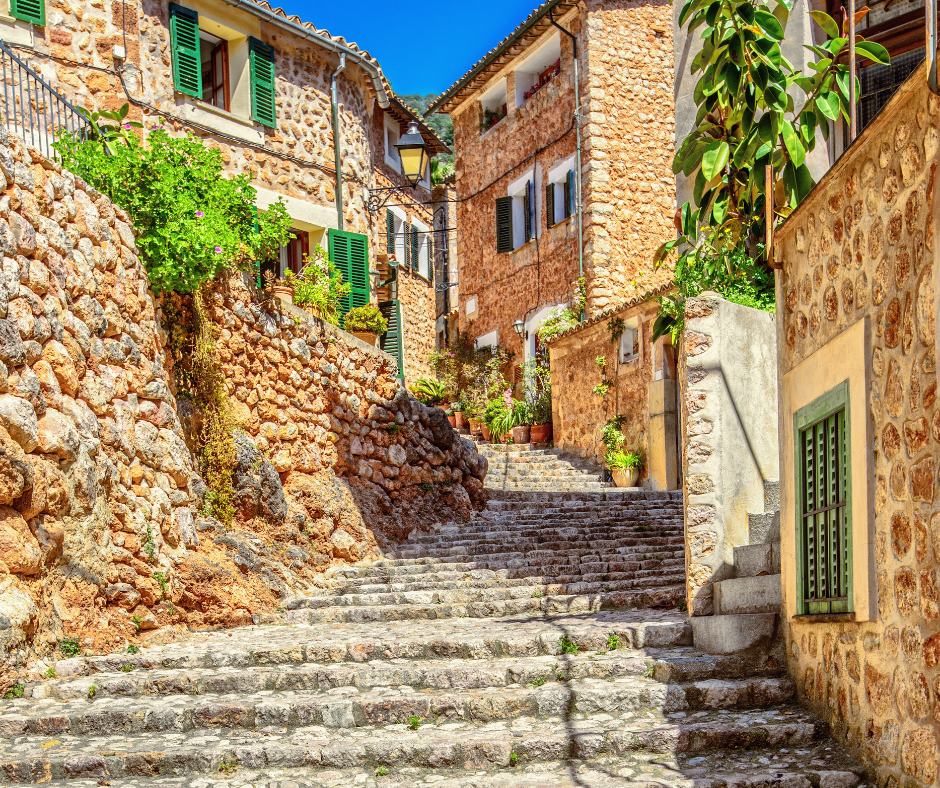
Although Palma is stunning, the real charm of Mallorca lies outside the capital. If you want to discover the island’s lesser-known but more special side, it’s worth renting a car and touring the countryside
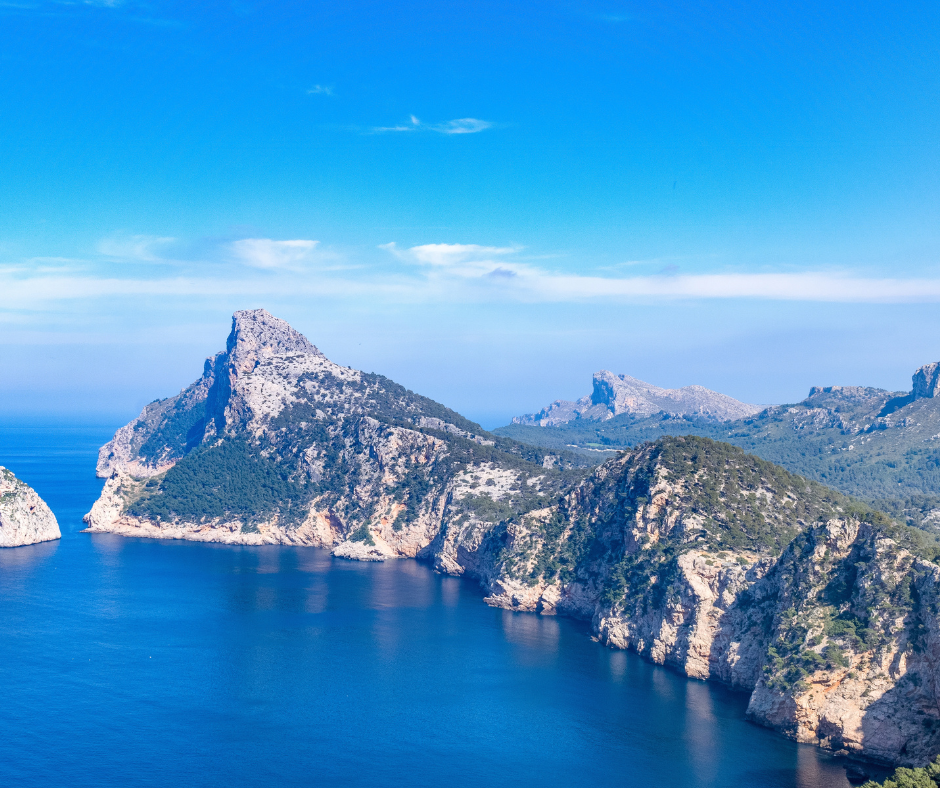
Serra de Tramuntana – mountain range in the northwest of Mallorca, a UNESCO World Heritage Site. It can be reached by car from Palma de Mallorca via the scenic serpentine roads in around 40-50 minutes, depending on which town you are heading to. Along the way, you will be accompanied by breathtaking rocky landscapes, pine forests and tiny, secluded villages. One of the most charming villages is Valldemossa, which is only 20 km from Palma de Mallorca and can be reached by car in around 30 minutes. Walking through its cobbled streets and stone houses, you feel as if you have stepped back in time. One of the town’s most famous residents was Frédéric Chopin, who spent a winter here with the writer George Sand – now commemorated in the Royal Carthusian Monastery.
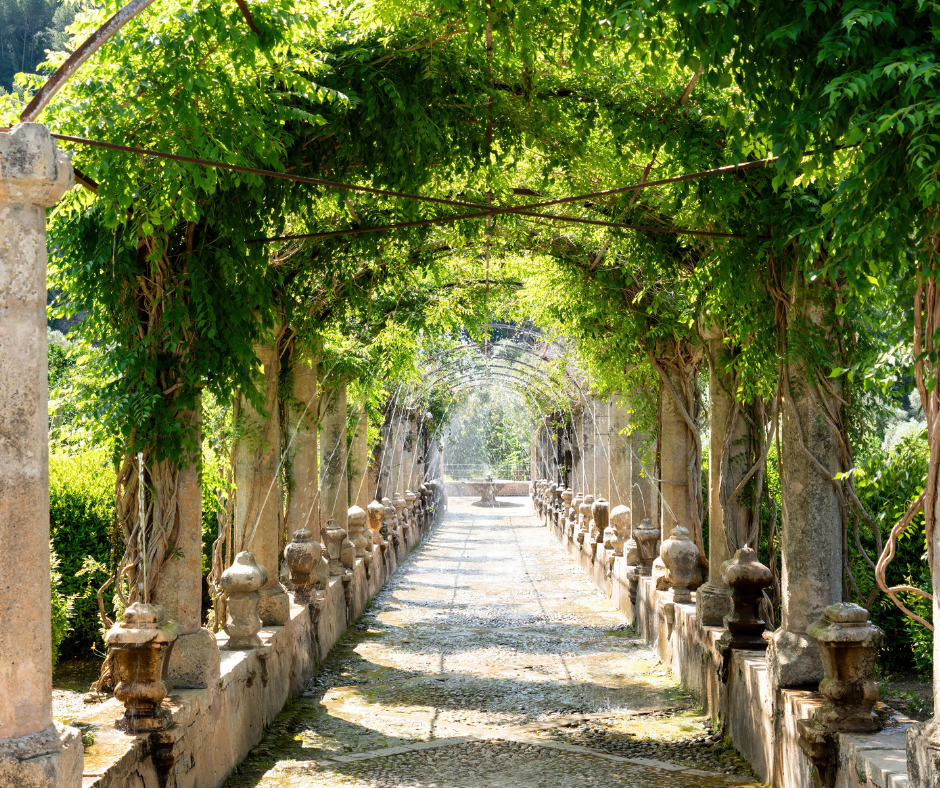
Sóller is a charming little town in the heart of the Tramuntana mountains, about 30 km from Palma de Mallorca and 40-45 minutes by car. The town is famous for its orchards, especially its orange and lemon groves, whose scent permeates the whole area. The main square, Plaça de la Constitució, is lined with cosy cafés, and the church of Sant Bartomeu, rising in the centre, is one of the most beautiful neo-Gothic buildings on the island. For the full experience, don’t miss the historic wooden train that connects Sóller with Port de Sóller
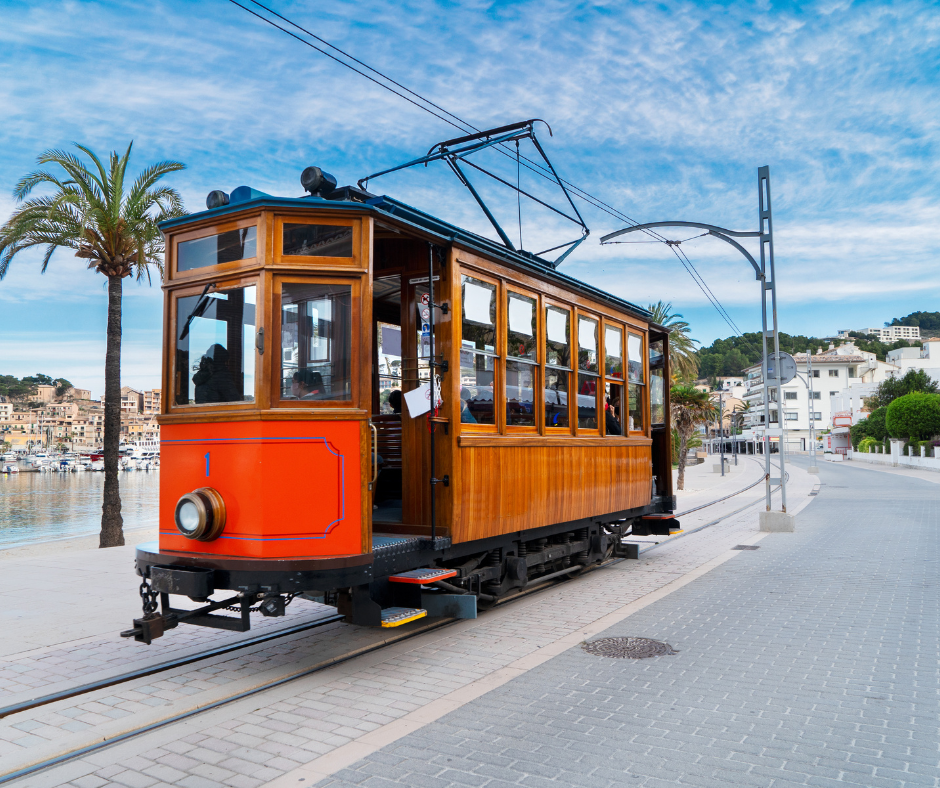
The Sóller Railway is a magical nostalgia train that takes you to the nearby port town of Port de Sóller in 20 minutes. The journey takes you through magnificent citrus groves, picturesque valleys and stunning landscapes of the Tramuntana mountains. Tickets cost €8 per person (2024 price) and can be purchased on the train. Even if you have little time at the port, the train ride alone is worth it, as the old wooden train offers wonderful views of the landscape and a real time-travel experience.
Port de Sóller is a picturesque harbour town with a promenade, sandy coves and boats rocking in the harbour, guaranteed to enchant visitors. The harbour is lined with fine restaurants where you can sample Mallorca’s famous seafood while enjoying the tranquil coastal panorama.
Cap de Formentor is Mallorca’s northernmost point, one of the island’s most iconic landmarks with its stunning cliffs and panoramic views. It is located about 80 km from Palma de Mallorca and can be reached in about 1.5 hours by car. The road takes you along winding serpentines, past pine forests and viewpoints, making the drive there an unforgettable experience. The final destination is the famous Formentor lighthouse, with unrivalled views of the endless sea. For a truly magical experience, arrive at sunset, when the golden glow of the setting sun illuminates the cliffs and the water’s surface – a sight worth all the effort.
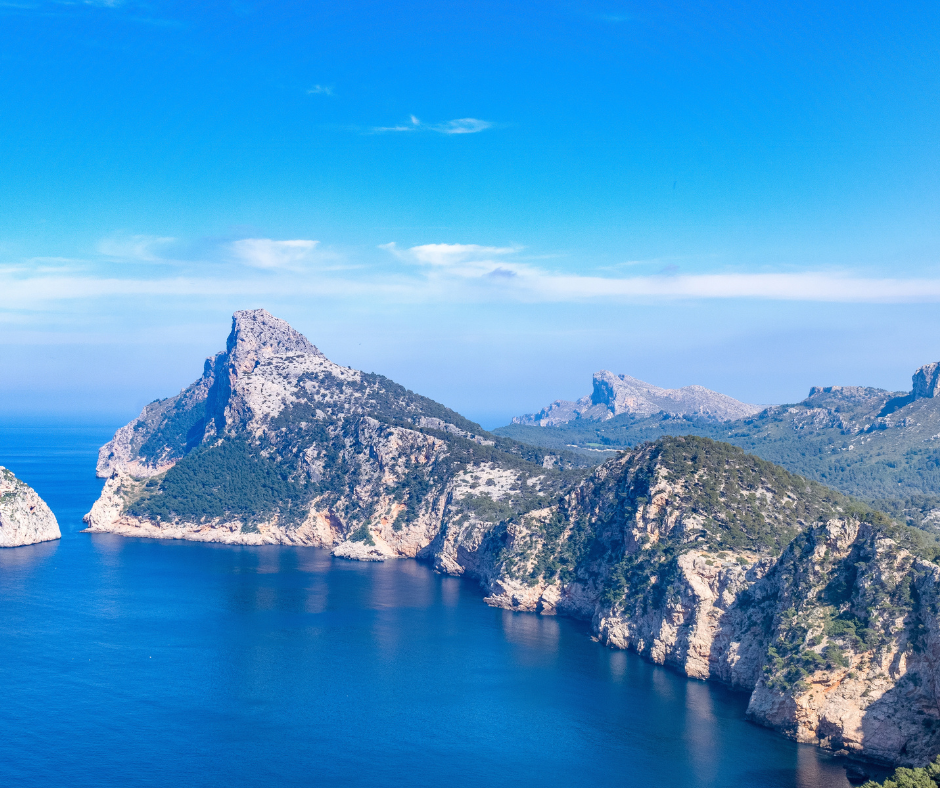
The Drach Caves are located east of Palma de Mallorca, near Manacor, about 60 km from the capital, which can be reached in about an hour by car. This is one of Mallorca’s best-known natural wonders, a vast underground cave system stretching for over 1.2 km. At the bottom of the cave is Lake Martel, one of the largest underground lakes in Europe. Visitors can take a special boat tour accompanied by live classical music – and the cave’s acoustics make the experience even more special. The shimmering stalactites and the cave ceiling illuminated by mysterious lights create an almost fairytale-like atmosphere, making the Drach Caves an unmissable stop on your exploration of Mallorca.
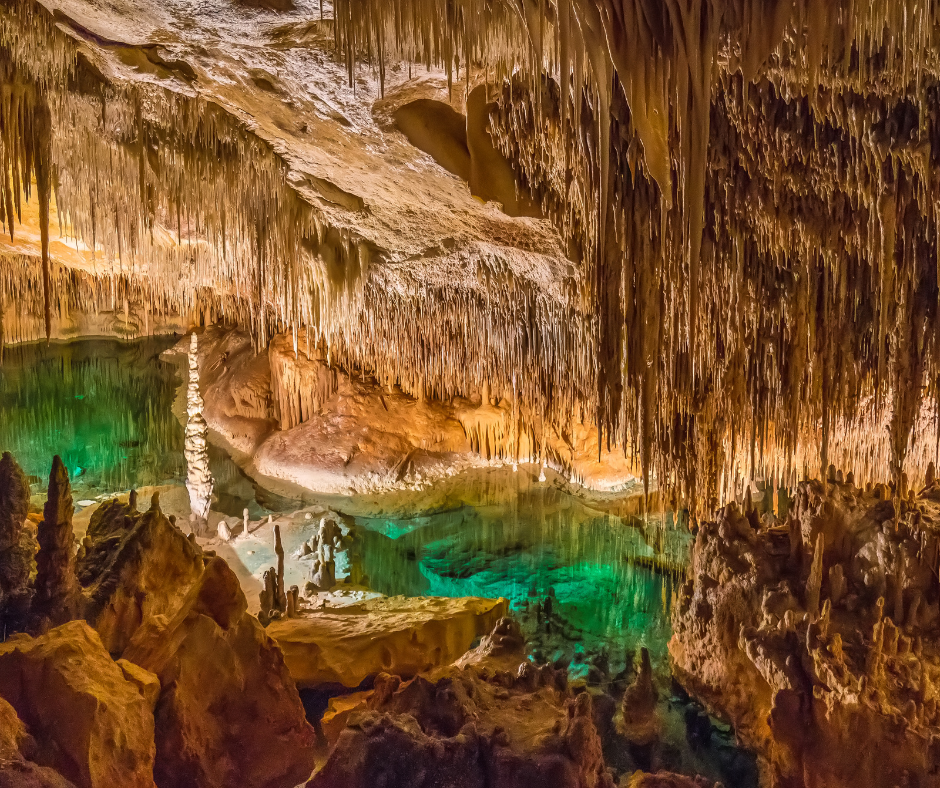
TIP: manacor-caves-of-drach-optional-east-mallorca-tour
Did you know? Some of the island’s beaches are still hidden treasures: if you’re looking for a quiet paradise beach instead of a crowded tourist area, Cala Varques or Es Trenc could be the perfect choice.
Culinary adventures in Mallorca
Mallorca’s gastronomy is the perfect blend of Mediterranean flavours and traditional Balearic cuisine. One of the island’s best-known specialities is sobrassada, a spicy, spreadable sausage flavoured with paprika and garlic. In the coastal towns you can enjoy fresh seafood dishes such as caldereta de langosta, a crawfish stew from Menorca, but also very popular in Mallorca.
In local markets, you can try the famous ensaimada, a spiral pastry sprinkled with icing sugar, perfect for breakfast with a cup of coffee or hot chocolate. For a hearty lunch, try a dish called tumbet, made with aubergines, peppers and potatoes layered with tomato sauce – the Mallorcans’ version of ratatouille.

Tapas bars offer fresh olives, Iberian ham and local cheeses. Pair your meal with a glass of Mallorcan wine, as the island’s wineries offer excellent red and white wines. Extra virgin olive oil is also a key ingredient in Mediterranean cuisine, pressed locally in the olive groves of the Tramuntana mountains.
A culinary adventure in Mallorca would not be complete without an authentic paella or fideuà (pasta) made with seafood. For a truly special experience, visit a celler, a traditional Mallorcan restaurant where family recipes are handed down from generation to generation.
TIP: palma-de-mallorca-spanish-cooking-experience
Mallorca and the world-famous Majorica pearls
The name of the island is almost synonymous with Majorica pearls, which are very popular all over the world. Although they are not natural, but artificial pearls, they are deceptively similar to real pearls and are high quality jewellery that has been made in Majorca for over 130 years.

The history of the Majorica pearl dates back to 1890, when a German engineer, Eduard Hugo Heusch, developed a process whereby the pearls are made from glass and then coated with a secret pearlescent coating applied in several layers. This special technique gives the pearls their natural lustre and durability.

The Majorica factory is headquartered in the picturesque town of Manacor, the second largest municipality in Mallorca. Here, visitors can learn about the bead-making process, watch the master craftsmen at work and, of course, buy some of these elegant pieces of jewellery. Majorica pearls are available in a variety of shapes and colours, from classic white to pink and black. One of the biggest advantages of man-made pearls is that they are much more resistant and durable than natural sea pearls, while their beauty and luster are almost identical to them. This is why they have become extremely popular over the decades and are now sought-after luxury items in many parts of the world.
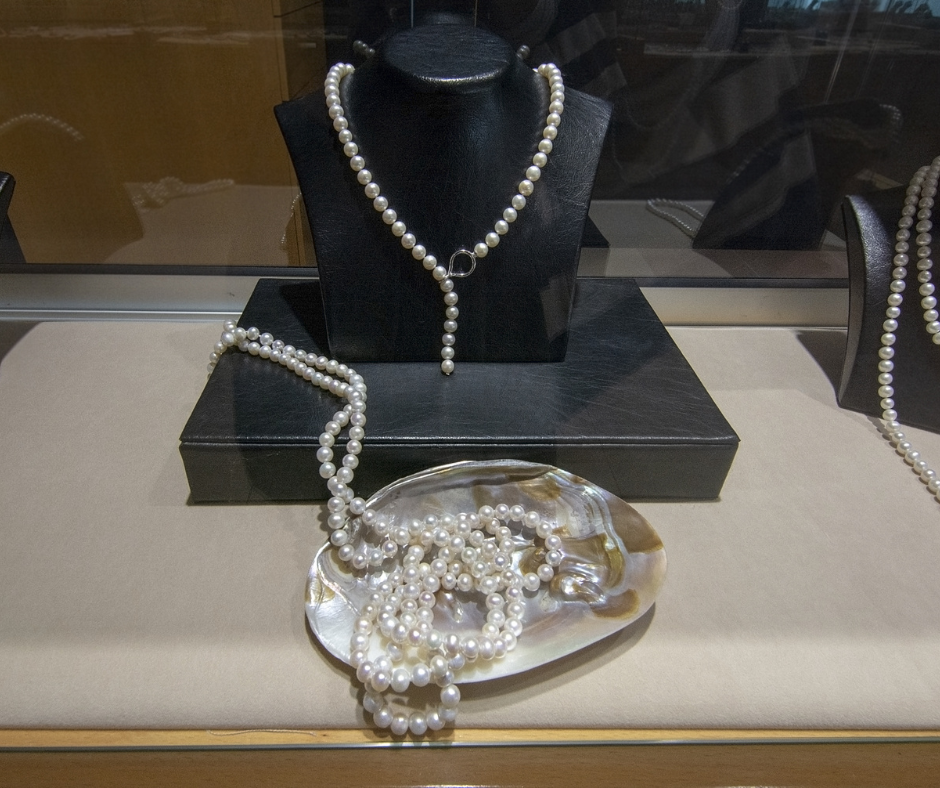
If you’re in Majorca and want to take home a truly special local keepsake, a Majorica pearl jewel is the perfect choice – elegant, timeless and embodying one of the island’s most famous artisan traditions.
Mallorca is a place where everyone can find the perfect getaway for them. Whether it’s urban adventures, hiking, beaching or gastronomic experiences, the island is guaranteed to enchant. From a slow morning cup of coffee to a tapas at sunset, the Mediterranean feel is here in every moment. Once you visit Mallorca, you’re sure to want to come back!


